Yoke and arrows
The yoke and arrows (Spanish: Yugo y flechas) or the yoke and the bundle of arrows (Spanish: Yugo y haz de flechas) is a badge dating back to the Spanish co-monarchy of the Catholic monarchs Ferdinand II of Aragon and Isabella I of Castile. Subsequent Catholic monarchs continued to use it on their shields to represent a united Spain and as the "symbol of the heroic virtues of the race".[1]
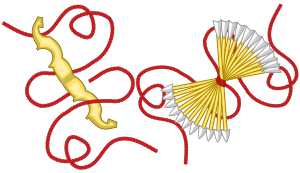
It was also an allusion to the names of the founding monarchs: Y stood for yugo and for Ysabel (in contemporary spelling) and F stood for flechas and for Fernando. The yoke referred to the legend of the Gordian knot, as did the motto Tanto monta; the bundle of arrows alluded to the ancient proverb that arrows can be easily broken one by one, but are unbreakable if tied together.
The yoke and arrows became a political symbol of the Fascist Falange when it was founded in 1934, and during the Spanish Civil War it was used as one of the major emblems of the Nazi Germany-supported Nationalist faction. After they won the war, Falange became the sole legal party in Spain and their yoke and arrows also was a main symbol of the Francoist regime. It was eventually removed during the Spanish transition to democracy, together with the also appropriated Eagle of Saint John. From then on, it is no longer representative of Spain or its monarchy and has been considered a symbol of the Fascist far-right.
 Badge of Ferdinand II and Isabella
Badge of Ferdinand II and Isabella The yoke and arrows on a building in Spain
The yoke and arrows on a building in Spain.svg.png.webp)
 Flag of the Spanish Falange
Flag of the Spanish Falange Logo of the Spanish Falange
Logo of the Spanish Falange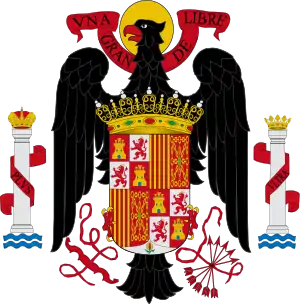 Francoist Spain coat of arms (1945-1977)
Francoist Spain coat of arms (1945-1977).svg.png.webp) Current Spain coat of arms
Current Spain coat of arms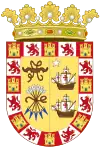 Coat of arms of Panama City
Coat of arms of Panama City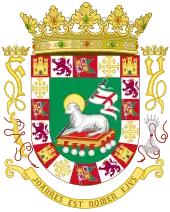 Coat of arms of Puerto Rico
Coat of arms of Puerto Rico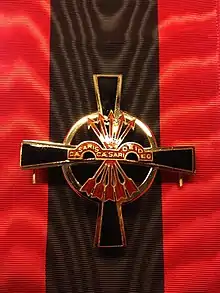 Grand Cross of the Imperial Order of the Yoke and Arrows
Grand Cross of the Imperial Order of the Yoke and Arrows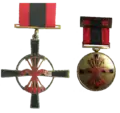 Medal of the Imperial Order of the Yoke and Arrows
Medal of the Imperial Order of the Yoke and Arrows
See also
References
- Wendy Parkins. Fashioning the body politic: dress, gender, citizenship. Oxford, England, UK; New York, New York, USA: Berg, 2002. Pp. 178